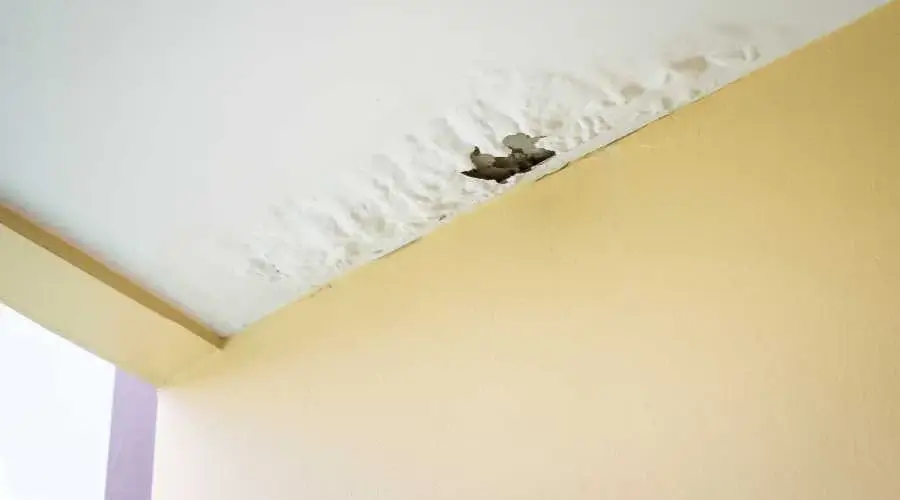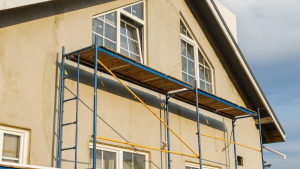Nobody likes to find water damage inside their walls. But this is precisely what owners of stucco houses built between the 2000s and the mid-2010s are dealing with. Improperly made stucco systems may cause significant and expensive water damage.
When water seeps into your walls, it may cause health problems and harm your home’s structural integrity. With this in mind, it’s critical to be able to tell whether water has been trapped in your walls. Contact a stucco remediation specialist immediately if you see water in your walls.
The sooner your damaged home can be repaired, the better. Water damage deteriorates over time, increasing repair expenses.
When assessing whether your Stucco has water damage, there are seven essential indicators to check for. Cracking, discoloration, moss development, mold growth, crumbling, softening, and bubbling are all signs of water damage.
1. Crack Formation
Cracks in your Stucco aren’t always an indication of water damage. They
couldn’t possibly be a sign of anything wrong happening. Cracks in your Stucco may form due to many factors, including your home’s foundation sinking.
This isn’t to suggest you shouldn’t. Ignore any cracks in your Stucco. If they weren’t on this list, they did. However, if you see cracks widening, look around for other signs of water damage.
Hairline fractures might be an indication of worsening. The fractures may be left alone or
touched up if no other clues are detected. The most severe issues are more significant cracks. They might be caused by your Stucco expanding and shrinking due to moisture retention.
Even if you discover a larger crack but no other signs of water damage, you should get it fixed. That crack may not have been caused by water, but it may have allowed water to enter your walls and cause damage.
2. Staining
Staining on your walls indicates moisture damage. Dirty streaks, for example, may appear where water rushes, such as along the edges of your windows. The issue here might be wrongly installed or missing flashing.
Along with streaks, you may see black patches. These discolored areas might be caused by moisture trapped inside the wall. Painting over them will not address the underlying issue generating the discoloration.
The discolored areas on your stucco walls may seem moist. If the rain has just ended, this isn’t necessarily an issue. However, if the moist areas remain, it might indicate a concern. Start checking for black areas around fractures since water may enter the wall here.
3. Moss Growth
Moss growth does not always indicate water being trapped inside your walls and causing harm. However, it is a warning that water is not adequately channeled away from your walls. And if water isn’t correctly channeled away from your walls, it may cause damage over time.
Most often develops at the foot of walls and where water flows down them. Water flowing down your walls might be due to a problem with your flashing or gutters. And moss development at the base of your walls might indicate a need for more clearance between the wall’s termination and the ground.
Moss growing on your Stucco – or any exterior material – indicates that something needs to be corrected.
4. Mold Growth
Unlike most growth, mold development indicates water is trapped inside your walls. Mold flourishes in dark, wet environments, such as within walls that retain moisture. Mold might be the cause of black stains on your Stucco. And if there’s mold on the exterior of your walls, there’s probably more on the inside.
Mold is harmful for two reasons. For starters, it may be harmful to your health. Mold in your walls may damage individuals living in your house. Second, it indicates that the wooden timbers inside your walls are deteriorating. Your walls become less structurally sound as the beams decay.
5. Surface Crumbling
The surface of your Stucco should be apparent if it is cracking. Although surface degradation may indicate underlying deterioration, it is not necessarily caused by water. Still, it’s an indication that an issue inside your boundaries must be addressed.
Your walls grow increasingly vulnerable to harm as their surface deteriorates—additional damage results in additional layers separating. As more layers are eliminated, the devastation becomes more severe. It’s a never-ending cycle of destruction.
You could determine if the cracking is caused by water damage if the freshly exposed layers are soft or damp to the touch.
Another issue to be concerned about is surface cracking, which signals that your property has fewer layers of water protection. Water may flow through Stucco because it is porous. However, you want to avoid pouring through so efficiently be expelled from the walls.
6. Soft Spots
Additional indicators of water damage often accompany soft areas on Stucco. There will likely be weak spots if your walls have mold or moss. More often, stains appear on a soft surface.
Look for soft places if you see cracks or other damage that are only sometimes caused by water. If you find them, you’ve most likely located your culprit.
7. Surface Bubbling
Water damage is indicated by bubbling, often associated with mushy areas and fractures. This occurs when moisture penetrates and warms the layers of your Stucco. Typically, bubbling may be noticed towards the bottom of walls where water collects.
CMB Wayne Stucco & EIFS Remediation
Call CMB Wayne Stucco & EIFS if you see evidence of water damage on your stucco property. We’ll come out and evaluate your walls before recommending the next steps.


